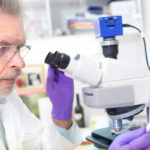 Pelvic Congestion Syndrome is experienced as a heaviness and or pain in the lower back and abdominal area. It is caused by varicose veins in the region of the pelvis. Since these damaged veins are deep in the abdomen and are not visible from the skin, it can be difficult to come to a diagnosis. This is due to the fact that there are many causes for pelvic pain in women, especially during the childbearing age when menstruation occurs. Pelvic Congestion Syndrome can be misdiagnosed as endometriosis, fibroids, and other diseases.
Pelvic Congestion Syndrome is experienced as a heaviness and or pain in the lower back and abdominal area. It is caused by varicose veins in the region of the pelvis. Since these damaged veins are deep in the abdomen and are not visible from the skin, it can be difficult to come to a diagnosis. This is due to the fact that there are many causes for pelvic pain in women, especially during the childbearing age when menstruation occurs. Pelvic Congestion Syndrome can be misdiagnosed as endometriosis, fibroids, and other diseases.
It can be difficult to diagnose due to the fact that the veins damaged in PCS are deep veins and non-visible. They occur mainly in younger women of childbearing age. It is often mistaken for fibroids, endometriosis, and other diseases.
Diagnosed or not the pain and discomfort can become so severe that it affects the woman’s daily life. That is why at Tampa Cardiovascular Associates, they are adamant about a correct diagnosis as swiftly as possible and getting started on the resultant treatment.
The doctors at Tampa Cardio are highly trained in embolization. Embolization is a simple procedure that can get rid of those painful pelvic varicose veins.
There is no need to continue to suffer. Come talk with us and we can advise you on the treatment options for you and your condition. Our team of experienced doctors brings a high level of knowledge on the topic of varicose veins. We know the pain that our patients go through and we want to take that pain away. We care about each and every patient and are focused on providing the absolute best care possible.
If you live in the Tampa bay area and are considering vein treatment, please call Tampa Cardiovascular Associates at 813-975-2800 or schedule an evaluation through our online form.




